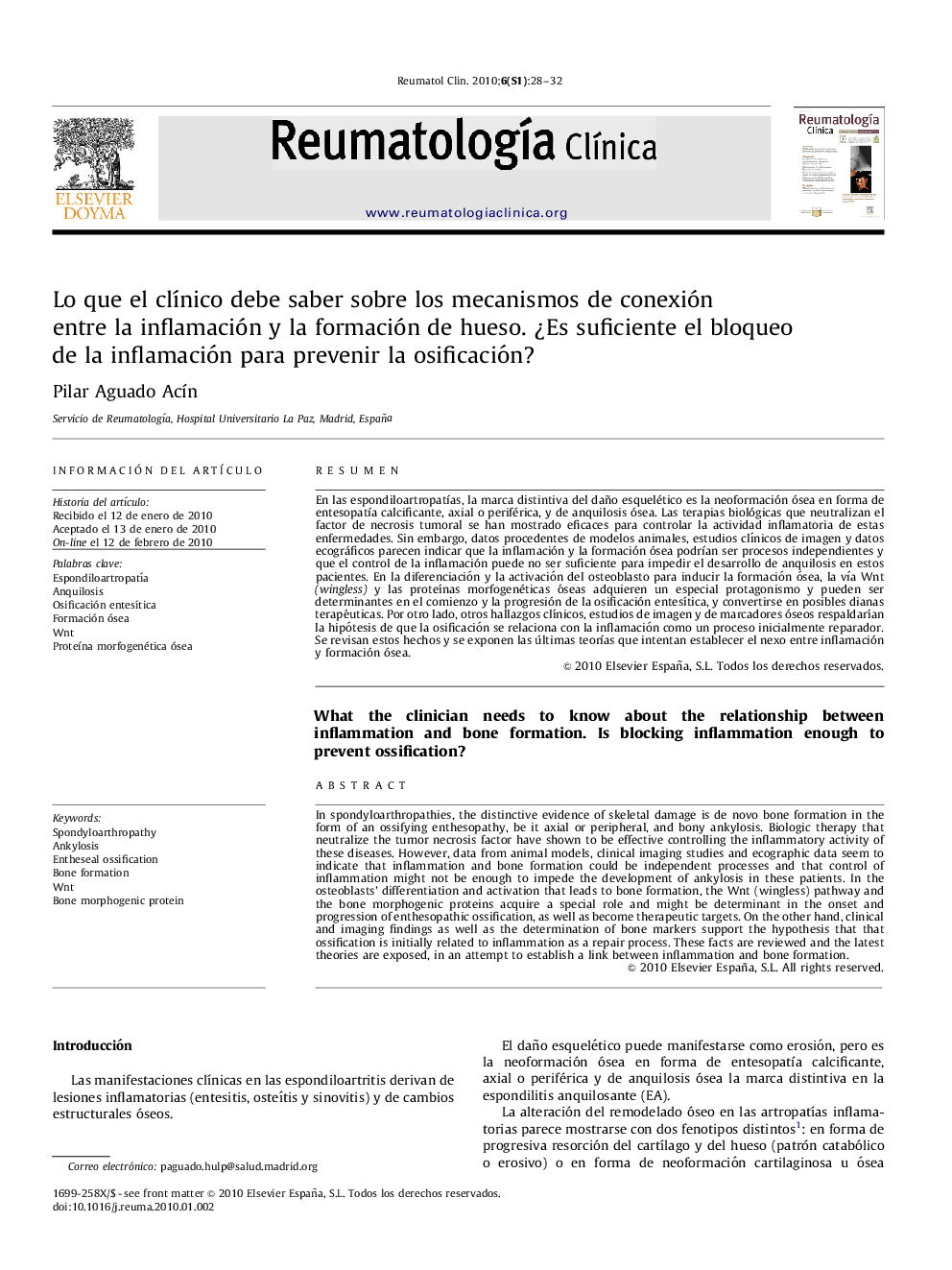| Article ID | Journal | Published Year | Pages | File Type |
|---|---|---|---|---|
| 3383642 | Reumatología Clínica | 2010 | 5 Pages |
Abstract
In spondyloarthropathies, the distinctive evidence of skeletal damage is de novo bone formation in the form of an ossifying enthesopathy, be it axial or peripheral, and bony ankylosis. Biologic therapy that neutralize the tumor necrosis factor have shown to be effective controlling the inflammatory activity of these diseases. However, data from animal models, clinical imaging studies and ecographic data seem to indicate that inflammation and bone formation could be independent processes and that control of inflammation might not be enough to impede the development of ankylosis in these patients. In the osteoblasts' differentiation and activation that leads to bone formation, the Wnt (wingless) pathway and the bone morphogenic proteins acquire a special role and might be determinant in the onset and progression of enthesopathic ossification, as well as become therapeutic targets. On the other hand, clinical and imaging findings as well as the determination of bone markers support the hypothesis that that ossification is initially related to inflammation as a repair process. These facts are reviewed and the latest theories are exposed, in an attempt to establish a link between inflammation and bone formation.
Keywords
Related Topics
Health Sciences
Medicine and Dentistry
Immunology, Allergology and Rheumatology
Authors
Pilar Aguado AcÃn,
